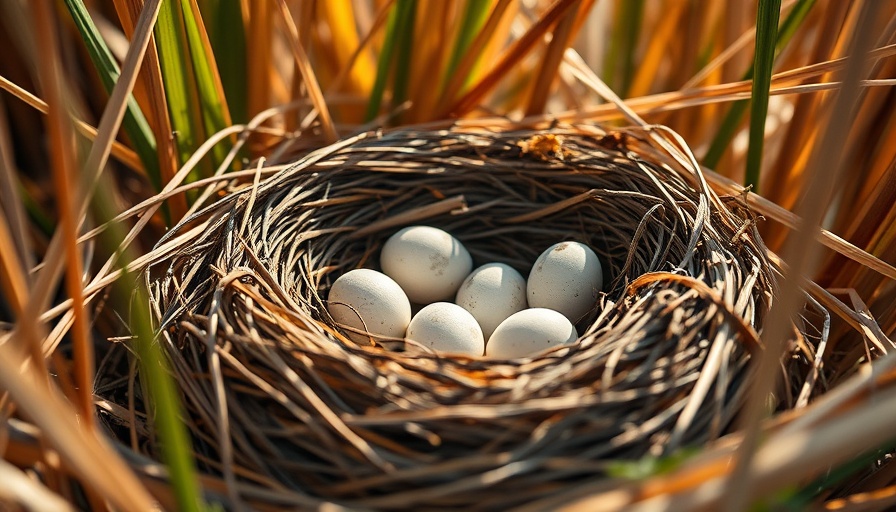
Understanding the Field Sparrow's Nesting Behavior
The Field Sparrow, a small, brown bird with a sweet song, has a unique strategy to increase its reproductive success. By building multiple nests at varying heights throughout the breeding season, these birds adapt to changing environmental conditions. Early in the season, a female Field Sparrow begins with a nest near the ground in a dense grassy area, maximizing concealment from predators. However, as the season progresses and vegetation thickens, she relocates her nests to higher perches, utilizing shrubs and trees to safeguard her eggs from mammals and snakes.
The Importance of Habitat Conservation
Field Sparrows thrive in open habitats, such as abandoned agricultural fields and edges of forests, but they are notoriously sensitive to human activity. Urban sprawl and the removal of native vegetation have significantly impacted their populations, causing a concerning decline. According to the North American Breeding Bird Survey, Field Sparrows have seen a cumulative population drop of about 69% over the past five decades. To help these birds flourish, conservation efforts must focus on preserving brushy habitats and advocating for responsible land use.
Food Sources and Foraging Techniques
Field Sparrows primarily feed on grass seeds and insects, adapting their diet seasonally. In warmer months, they consume a mix of small seeds and various insect prey, providing the necessary protein for raising their young. Interestingly, their unique foraging technique involves jumping onto the end of a grass stalk and riding it down, a clever adaptation that allows them to access hard-to-reach seeds while maintaining cover from potential threats.
Future Outlook: Enhancing Populations
The future of the Field Sparrow largely depends on human understanding and intervention in habitat management. With their populations in decline, creating awareness about their needs and the ecosystems they inhabit is crucial for their survival. Engaging local communities in conservation efforts, such as planting native vegetation and preserving agricultural edges, can foster an environment where Field Sparrows continue to thrive.
Conclusion: Taking Action for Field Sparrows
By learning about the Field Sparrow and sharing their stories, we can contribute to the conservation of these charming birds, ensuring that they can continue to build their nests higher and thrive in our changing world.
 Add Row
Add Row  Add
Add 




Write A Comment